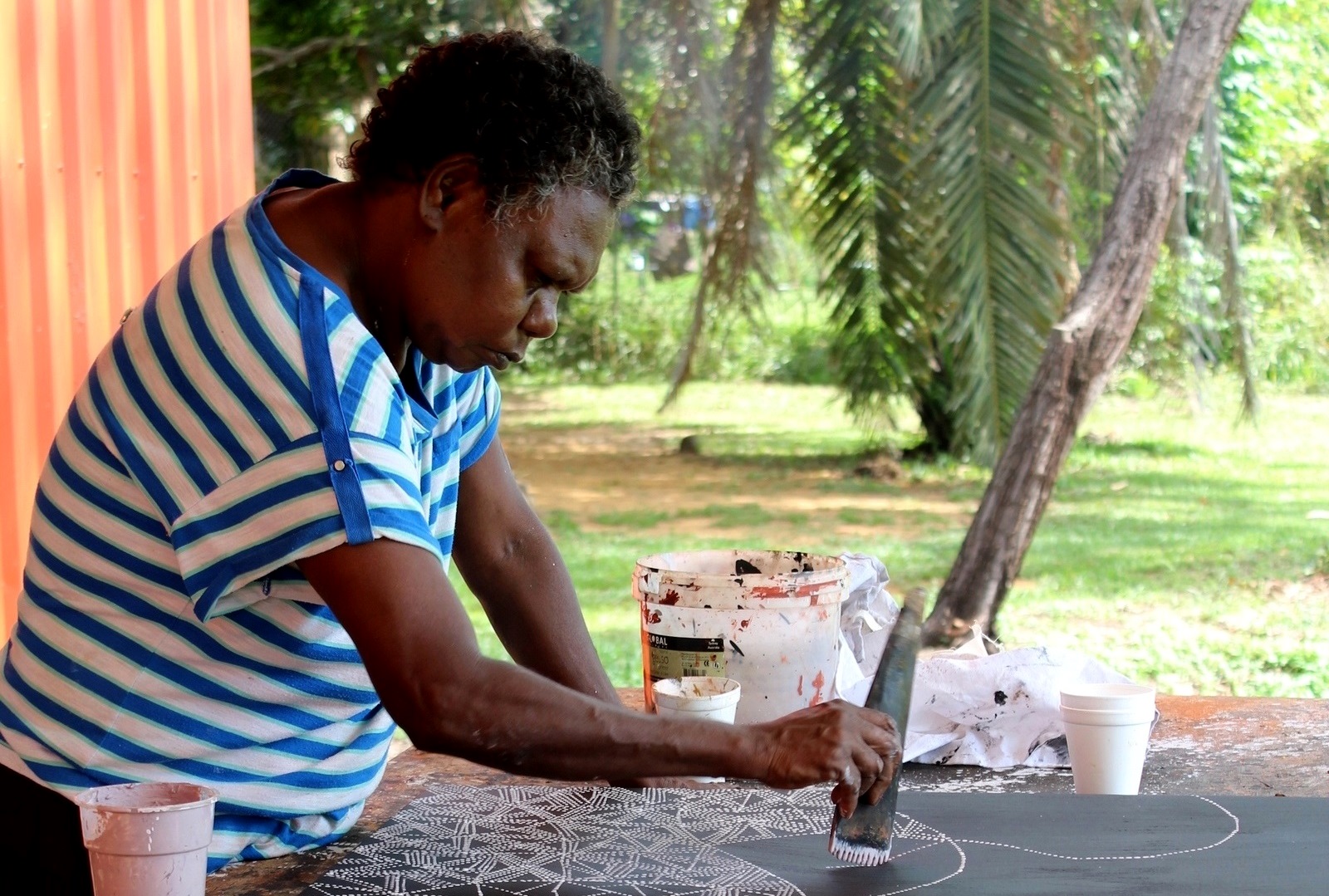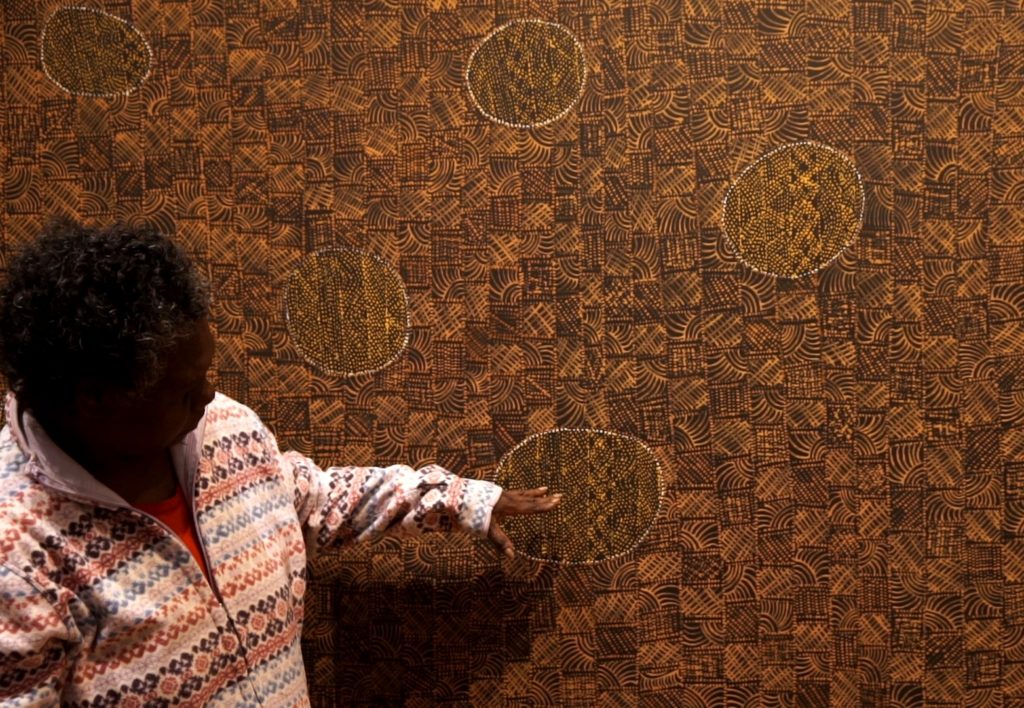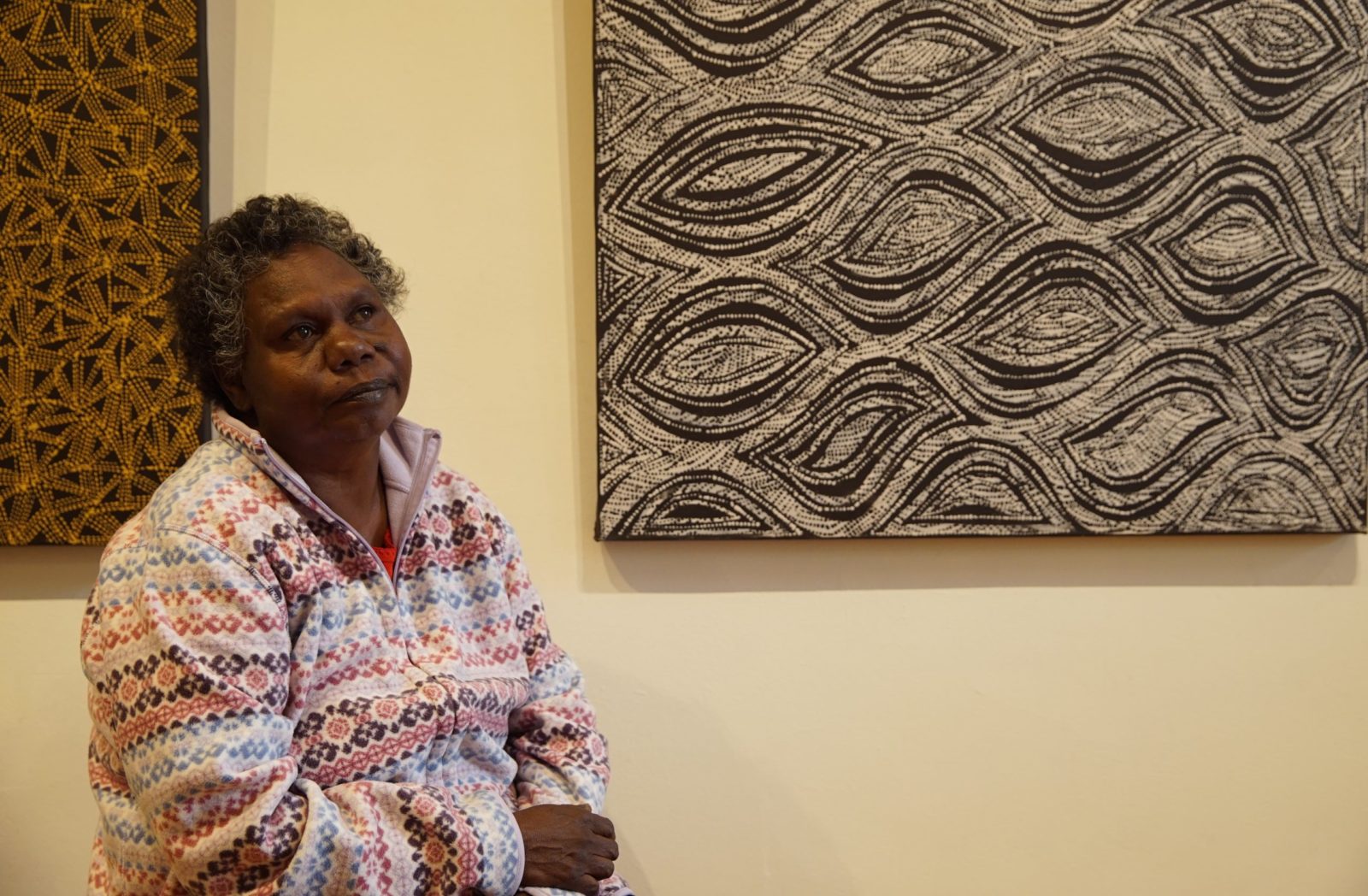In Conversation With Maria Josette Orsto
Maria Josette Orsto is an artist from the Tiwi Islands. These islands are part of the Northern Territory in Australia. They are 80 km to the north of Darwin, where the Arafura Sea joins the Timor Sea. In this conversation, Maria talks about her art and life on the Tiwi Islands.

Can you tell me about your favourite place on the Tiwi Islands?
My favourite place is the Art Center. That’s where I go and sit and paint and look at the view. The Art Center is where I can look and concentrate on painting.
What’s the view that you can see?
I see the others painting. I can see the boys paint. I can see the sea life. It gets me thinking about doing my own design.
Is it a social place, or do you like to work quietly on your own?
I work quietly sometimes. Then, the other artists might come, sit with me and talk about what we are going to do on the canvas.
Do people come to learn from you?
The kids come during the school hours. I show them how to use a comb for painting.
When you travel to exhibitions, what are the things you miss about the Tiwi Islands?
I am missing my grandchildren. I have a boy and a girl. My elder grandson is a boy, and the younger is a girl.
Do they paint with you?
The oldest does come and sit with me. The eldest grandson is going to learn how to paint. Sometimes, I take my canvas home and show it to him.

So you are passing on the tradition?
Yes, my father painted in the tradition that I paint. The men collect the ochre in white and yellow. We mix the colours with a bit of water and glue and start to do the designs.
Do you collect your own ochre now? Or do people collect it for you?
The men go out and collect black, yellow and white ochres.
What is the ironwood comb technique?
In the past, people used combs to paint designs on their bodies and faces. This technique is very old and used for ceremonial painting. Now, I use it on canvas.
The combs are made from hardwood. I have to carve to make the shape. Make it round or square, then I flatten it down with a grinder. Grind them, grind them, all around make it smooth. Then I get a little handsaw, just like this, I’d start it. Sawing, side, side, then change to … make them thinner, each. Round. Then I start to practice.
How long does it take you to make a new comb?
Only one day. All day.
How long would one of your bigger paintings take you to finish?
Well, I’ve done this painting for a long time. It took me about three months. Three months to finish. This small canvas, about two, three weeks.
Who were your teachers that you learned from?
One teacher was my father. He loved to carve every day. He’d go out and get wood and start painting and carving. After I'd finish school, I always go and help Dad paint them. My Dad taught me how to paint so I can be an artist.
What does painting mean for you, Maria?
Painting means carrying on and making me feel good inside. It gives me that feeling of not being worried. I feel that my painting will help me.
Do you think your paintings help other people?
The way they see it, or the way they see me doing it. That means they can do their own design too. There are just a few of the artists where I live, we all work at Arts Center.
How do artists encourage each other? Do you suggest things that people might do? Or do people develop their own way?
Yeah, developing their own way, some artists. Sometimes, we help each other while talking to each other. How do you want to do art? Just like carving. Men do the carving, and sometimes ladies carve, too.

Where does art fit in your community’s life?
Whenever I have this sharing and healing, our cultural way is to paint up ourselves for when people pass away. You all gather, sharing.
Is the traditional painting still used in those ceremonial times?
The lines, especially for the back and face. It’s the design of the crocodile back for the crocodile dance.
There is a big snake painting over there. Can you tell me about that?
I went down, and we killed a carpet snake in the bush. I saw its colour, so I started to design this pattern. I love the pattern, so I did a painting of it.
Is snake cooked and eaten in the Tiwi Islands?
Yes, we cook them in the fire or boil them in a big pot.
Can you tell me about colour?
I mix yellow and make an orange. Red and yellow. Mix it up, make it orange. And this white color, ocher, especially white we use when we become a widow.
The yellow represents like a nephews, or uncle, Mum’s blood brother pass away, or Mum herself pass away, auntie, we paint yellow. And the red? We paint for our grandfathers when they pass away. Red for my brother’s son who passed away, I use all red.
So yellow is the colour for mother?
Mother’s side. Miss my Mum. She took my youngest son to London.

So your family travel a lot with the art?
Dad used to travel to Fiji for an art festival. I’ve been to Mexico. First time I went there I miss home.
So your heart belongs in the Tiwi Islands?
Yes, but it’s good to be travelling for my artwork.
What message would you like to send people who see your paintings?
They should come and fly down to the Tiwi Islands. I’d show them how it’s done. They’d see our people. All the ladies weaving.
Is there anything that you’d like to do with your art?
I love to do everything with my art. I’m missing doing batik. I might do that again.
